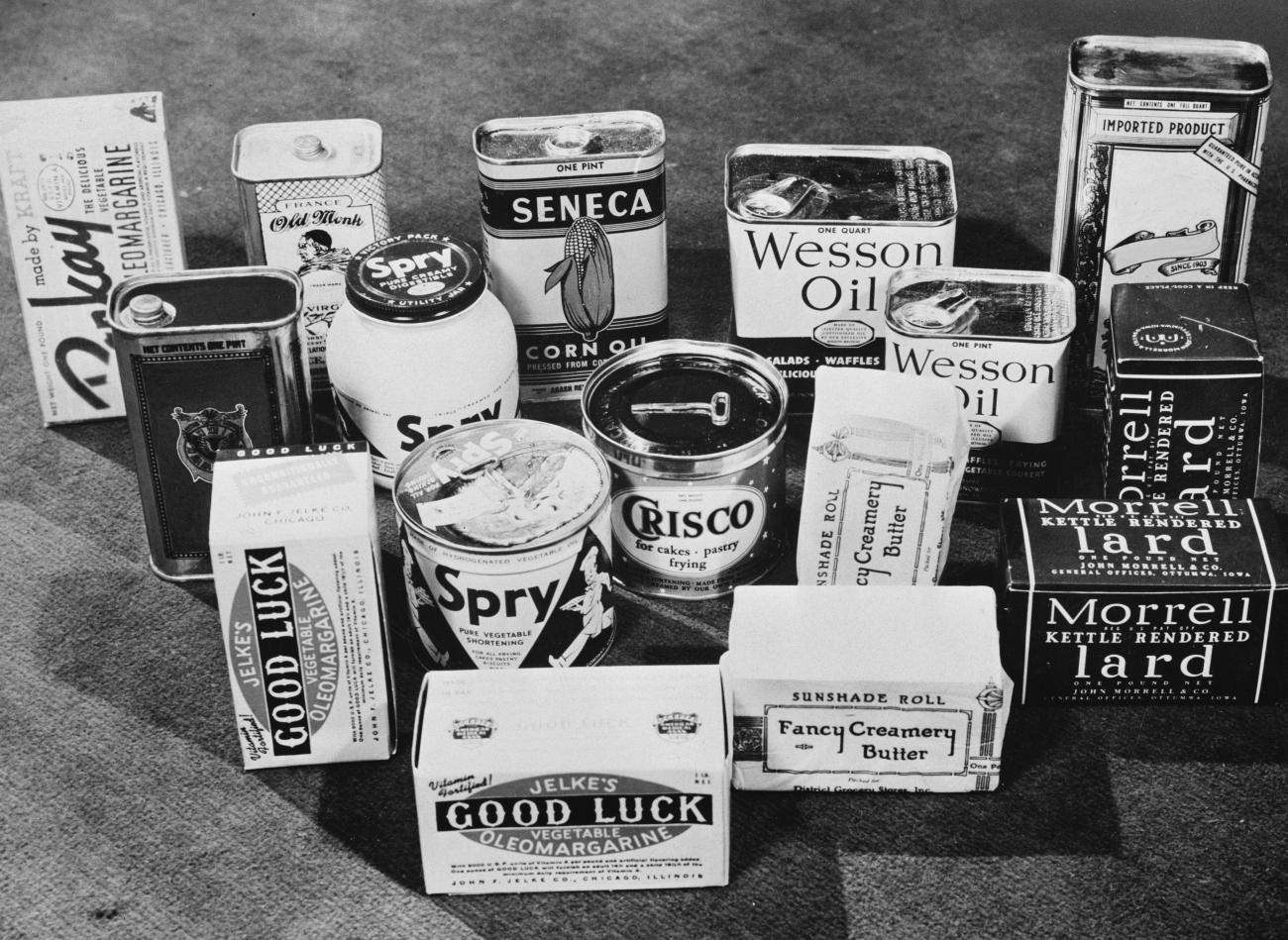During World War II rationing in Europe was quite severe as German blockades kept much needed supplies from entering key areas. In the US the rationing was less severe and covered things that were being used for military production and for the troops. Examples included leather for army boots, meat for ration packs, silk for parachutes, and all manner of oils needed to make bombs, war machines, and supplies for soldiers.

Butter was one of many oils and fats that were restricted during the war. This category also included mayonnaise, olive oil, lard, and margarine. Consumers had ration booklets that covered various commodities by weight.
A pound of butter in 1943 cost 16 points (from red ration stamps), in addition to the government-capped price of the butter. This would have been an entire week’s worth of fats and oils for one person. A pound of margarine, which was easier to produce, only used up 4 points.

While American rations were relatively comfortable compared to European rations in terms of how much each person in a household could eat in a week, many people were struggling financially, too. Riding the heels of the Great Depression, many families lost their primary bread winners to active service in the war and many of these soldiers never came back.
So savvy shoppers were not only concerned with ration points, but about money. One way to save on their food costs was to “cut” familiar foods with cheaper fillers. Meatloaf is perfect example of this. Another was Knox spread, a way to essentially double your butter without doubling your cost.

According to a newspaper ad from December of 1942 you could turn 1 pound of butter into 2 by using Knox gelatin to thin your butter, saving you around 39 cents. Converted to today’s money that would be just over $7– not a small sum for a family struggling to make ends meet.
The secret to this butter spread is the use of unflavored gelatin and some evaporated milk. When all whipped together it looks and tastes like whipped butter. There were some issues with this recipe, however. It doesn’t enable you to double all your butter, just the butter you serve at the table for toast, bread, and corn. This butter spread won’t be useable for frying or baking.

Another downside was the recipe size. If a single pound of butter cost you your entire ration of oil for the week then you’d have none left over to cook with- unless you had enough people in your household to make this hack worthwhile and buy several pounds of butter at a time. For many families of the era there’s no doubt that saving the equivalent of $7 was well worth the time and effort.
Emmy from the YouTube channel Emmymade tested this hack to see what it was like to make and eat this “stretched” butter. I don’t want to spoil the results of the experiment for you, but let’s just say that during the taste test it performed far better than I would have guessed. See how to make this spread in the video below.















